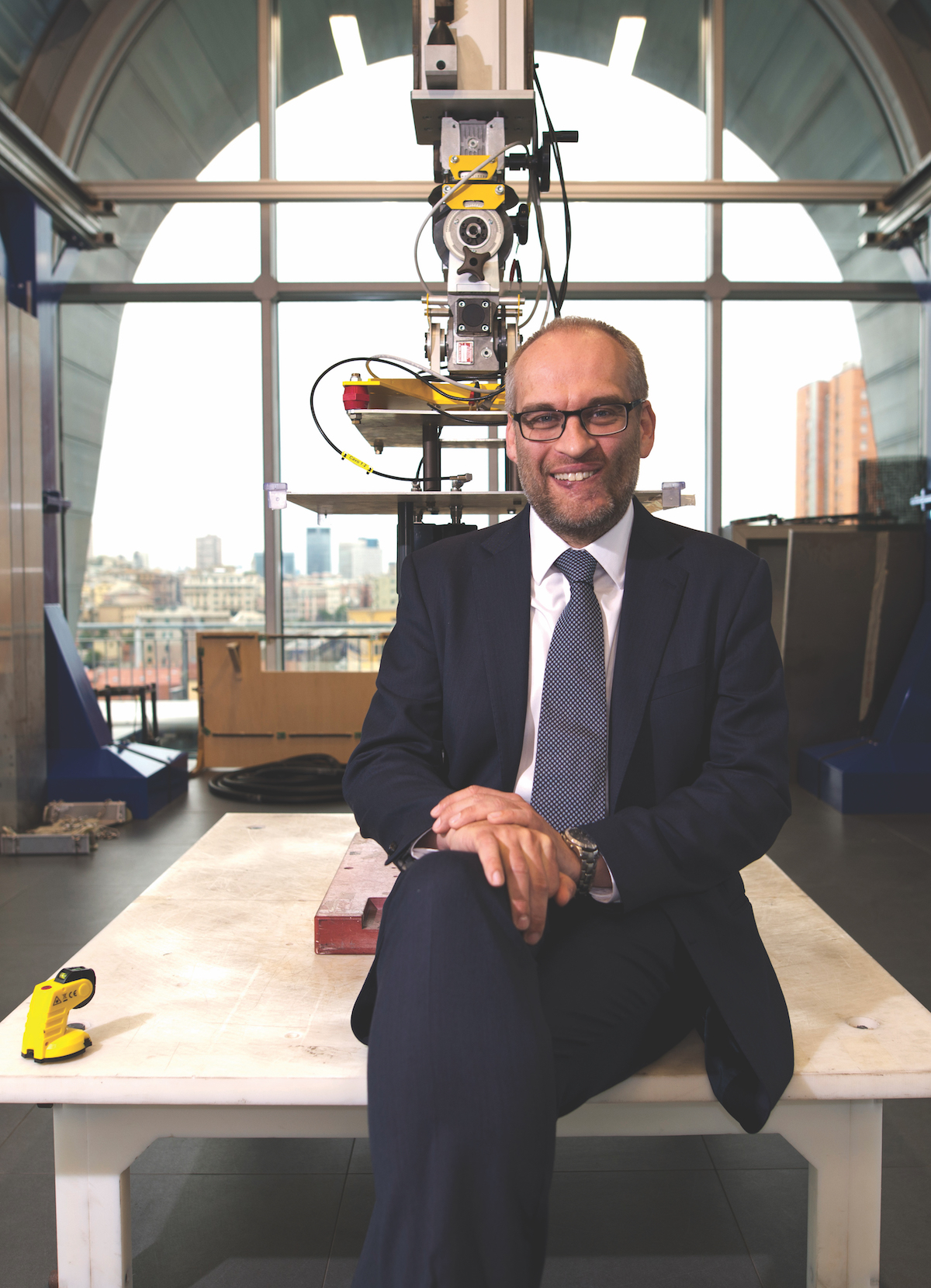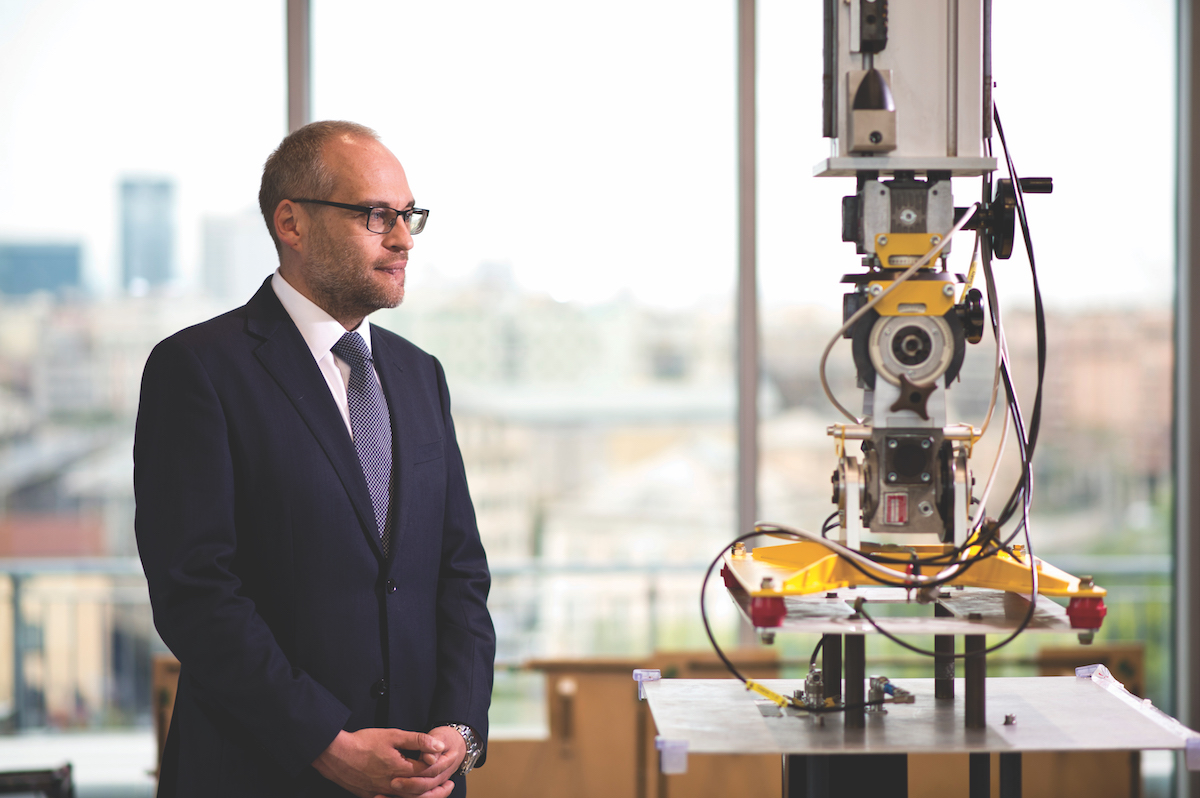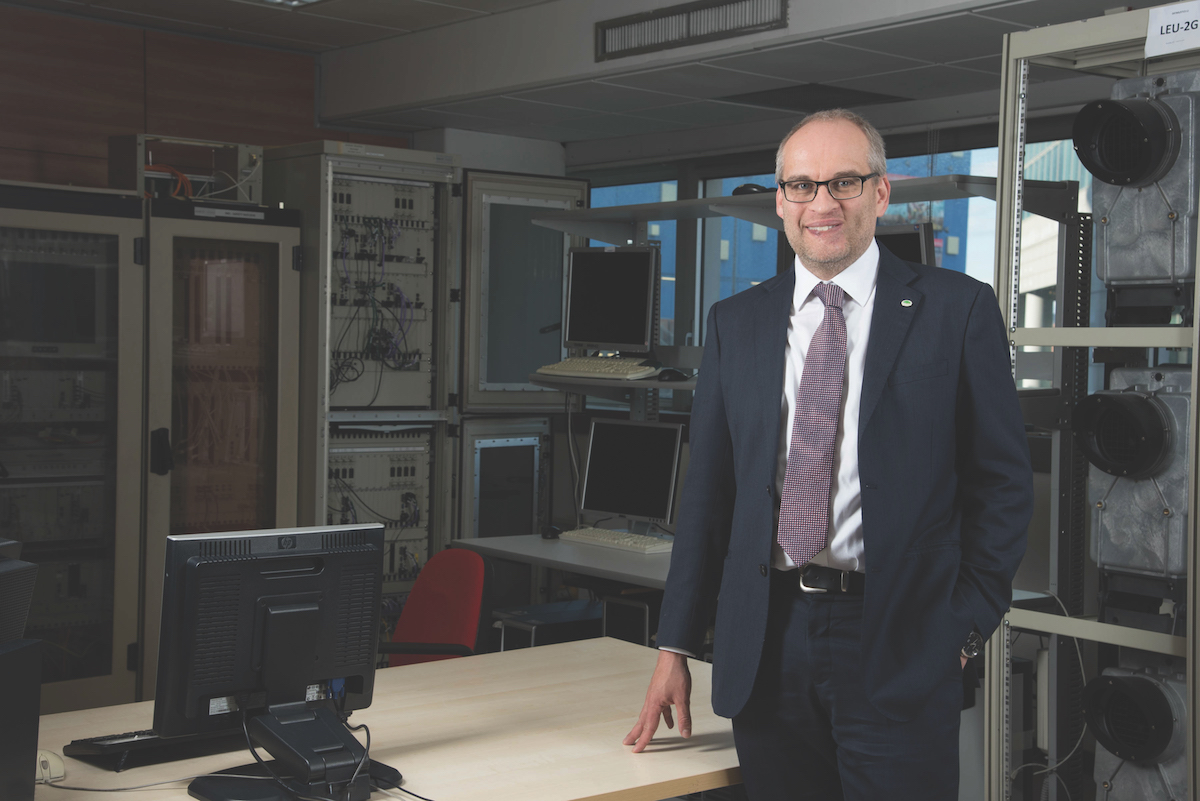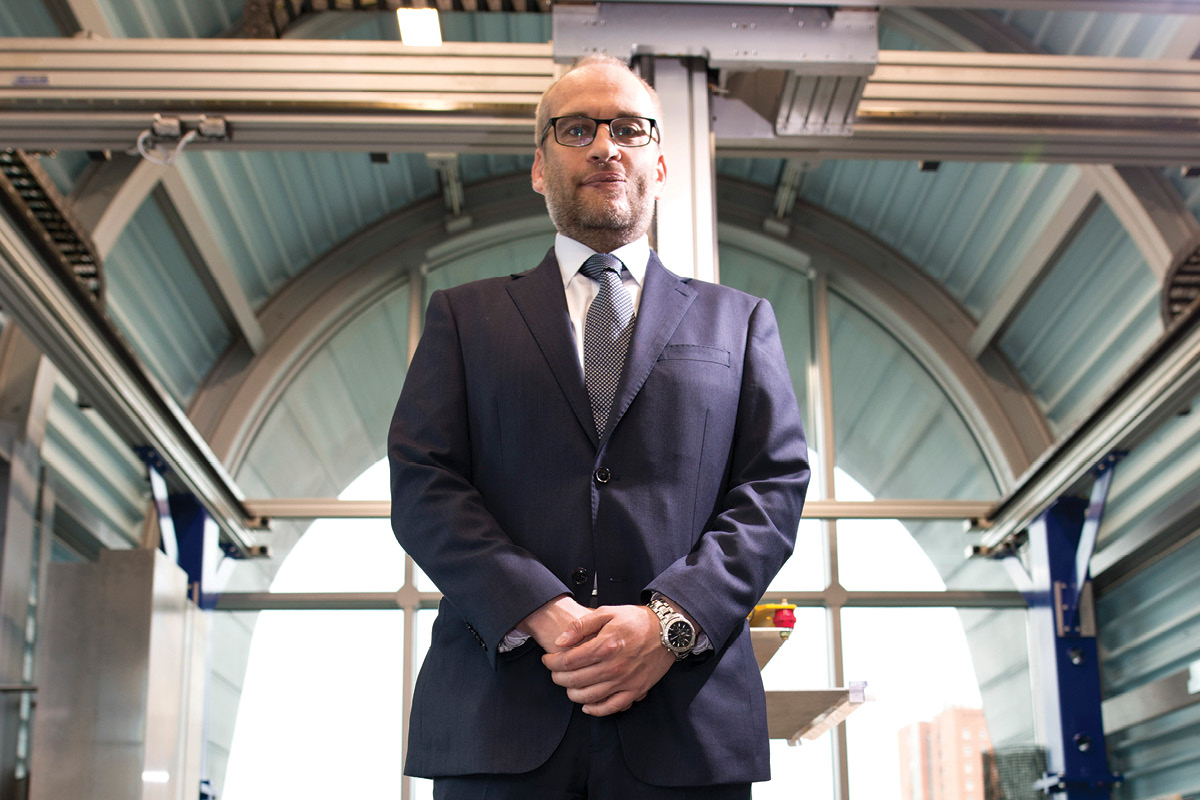Not long after Hitachi bought a stake in rail transport systems engineering firm Ansaldo STS in 2015, Andy Barr left his job running the UK operation of the former and joined the latter in Italy. The Genoa-based firm has travelled a long way since it was first established 150 years ago as Gio. Ansaldo & C, dedicated to producing locomotives.
When Andy was appointed Ansaldo CEO and General Manager in May 2016, the firm had just under 4,000 employees with a yearly revenue of almost €1.4 billion. “We’re in a sector that is developing very quickly. We are a company that is perceived to have a strong delivery record, but also one that has a great opportunity to grow further,” he says.
Intrigued, The CEO Magazine spoke to Andy about what is next for rail transport systems worldwide, as well as the growth opportunities on Ansaldo’s horizon.
The CEO Magazine:What spurred you to take on the role of CEO and General Manager?
Andy: One of the benefits of joining Ansaldo is that there’s very little overlap with Hitachi. In fact, there are a lot of complementary elements to the company.
I saw that as a significant benefit and a positive sign for the future of the company.
It was quite a change for me because I was previously based in the UK, and had to move to headquarters in Genoa, Italy. Ansaldo has a presence in more than
26 countries, so a lot of my time is spent visiting those countries and meeting our current customers and stakeholders, as well as looking at new opportunities.
In addition to the day-to-day running of the company, much of my motivation comes from wanting to move the company into the next phase and develop it for the future.
Overall, it’s a role that brought with it a significant amount of challenges; that was the real basis of the attraction for joining the company. From a personal point of view, the weather’s a lot nicer. It’s a bit of a culture shock in some ways, but it has been a great experience to learn a range of new things.
What do you think sets Ansaldo apart from its competitors?
Ansaldo has a unique operating model, because we are truly a matrix organisation, meaning we have the correct people closely aligned to our product delivery. But you have to also control that centrally, so we have processes in place so that we can manage our projects in a strong way, not just operationally but also financially on a regular basis.

If you think about the size of the company, we have nearly 900 live projects at any time, ranging from a couple of million Euros up to €800–900 million.
So there is a fair range in projects, and that means we have to place a lot of attention around the world on the delivery of those.
Why is having localised management so important for your firm?
The attention to detail that we have put towards localising our management means that we are able to deliver in a way that is closely linked to the engineering requirements from the onset, rather than having to revisit those requirements later.
I think the matrix structure plays to that point of efficiency because we have people in locations all over the world supporting these projects, meaning our workers are able to work closely with our customers and understand the requirements in real time.
Take our project in Brussels, for example. We are supporting that from our base in France, but also in Italy and in the US. Through using the time difference to our benefit, as well as online technologies, it means that we can actually, in real time, develop our technical offering and also test and validate it using collaboration across each of these locations.
Having a presence in a wide range of geographical locations is one of Ansaldo’s competitive advantages. In which areas are you looking to grow?
North America is a strong place for us. We have more than 600 people based in Pittsburgh, and we are building a new metro in Honolulu. Canada is starting to become a real growth area for us because it is going to be investing significantly in its public transport system in the next five to 10 years. It’s using technology in which we specialise.
Similarly in Australia, we are very strong in the west, but not so much in the east, so we are looking to find ways to strengthen our markets there. In Asia, we’ve got a big base in China, but we are looking to continue that growth. We are working alongside Hitachi in Ho Chi Minh City in Vietnam. I’m quite hopeful that this is something that will be a growth area for us, but the key challenge is in starting to diversify our technologies and our expertise into some slightly new areas.
You singled out the US as one country that you’re finding challenging. Why is that?
The challenge in the US is that most of what we do has to be localised. Some of the technologies aren’t currently there, so we are investing in the company and we are moving some of our expertise from Europe into the US to make that a centre of excellence.

For example, we have a signalling technology called CBTC, or communications-based train control. Rather than using old-fashioned wires and lights, it uses GSM (Global System for Mobile Communications) technology to define the movement of the train.
So we are moving some technical expertise to the US to be able to support that. We are investing in that market, too, to make sure that we can continue to be a significant player in that area.You’ve noted what Ansaldo is doing from a geographical perspective.
What about the financial side of things?
We need to make sure that our unitary costs are optimised in the best way. That means we need to work closely with our supply chain to make sure that we’ve optimised it and ensured that it is localised, because when you have a localised supply it reduces the currency risk and that helps our pricing significantly.
I can give you another example – Riyadh in Saudi Arabia. We have been building the Metro there for a number of years. Riyadh has invested significantly in its public transport network, and we are building one of a number of lines and bidding to do the maintenance on some of this network. We find that by having local people there we can have a significant financial benefit, because we are cheaper on price.
This is the model we’re starting to investigate more closely. Previously, we have done maintenance but not at this level; so it’s a change to our business model. I think some of the bigger contracts that we have around the world are starting to specify this as a core requirement.
As a business we are profitable and must continue on that path, because we are still
a quoted company on the Milan Stock Exchange and our shareholders need to remain happy. At the same time, we have to maintain a balance between the company’s profitability and its long-term success in winning new business.
The way to do that is to focus on your unitary cost, to make sure that’s optimised as much as it can be. When you’re a global company, you can do that. You can choose the location in which you want to have your base, but you can’t always choose your suppliers. That means working closely with your supply base.
What is unique about Ansaldo’s supplier model that helps the firm achieve its business goals?
In some cases, we have what’s called a turnkey business, meaning we will take responsibility and build the entire railway from scratch. That sometimes involves fitting the tunnels or fitting out the stations, but in most cases it involves fitting our automation technology and other ancillary technologies to the railway itself, as well as supplying the trains through our third-party supplier.
To do a capital-intensive project like that means you have to have a wide range of suppliers very closely aligned to your end goal, because the Ansaldo name is at the top, and the clients that we work with expect us to be the reagent.
In that situation, we have to be very well aligned and closely manage our supply chain. We’ve probably worked very closely in the past two years to optimise that, and the way that we’ve done it is we’ve embedded supply-chain management within our project teams.
When we bid for projects, we have supply-chain managers as part of that proposal, and they are working from the very start even before the contract has been awarded, alongside a list of suppliers to find those that are best placed to be aligned with us, to make sure that our delivery is in line with the client’s requirements.
By the time we sign the contracts for the delivery of the overall project, rather than negotiating further on price and other details, we’re actually working on how we can deliver these projects with those suppliers from day one.
That benefit is realised all the way through the project because it means that everybody has full visibility of the outputs. It also means they can match their requirements all the way through as well.
How many suppliers would you consider key to your success?
I’d say probably around 50 to 60. On a project basis, we have a range of other suppliers who will input at various times into projects. Every three or so years, they may do an element of a project for us.
But those relationships have to be managed, because in two or three years, the company could change, and revisiting that relationship can be quite difficult at times, so we maintain a process of regular dialogue with suppliers past and present.
We have Supplier Away Days. We have regular management meetings with suppliers, where they can come and ask us about our business, and vice versa.
That’s really important because they can understand any changes that are going on in the company, and make sure that they have products that are in line, but also that they’re talking to the right people, because relationships can change over time.
If you look at the average turnkey project, you could be talking hundreds of suppliers, for the smallest thing up to the rolling stock itself, so that is a real sphere of management that needs to be done, because small companies to really big companies of thousands of people have different requirements, and you have to have that regular dialogue to make sure that we are understanding those key requirements, and that they understand where our company’s going with the direction.
On the other hand, we shouldn’t be afraid to look at new suppliers. We have a healthy dialogue on an ongoing basis with companies that have technologies interesting to us.
People also come to see us with proposals for new outcomes that could be financially beneficial because they’re cheaper. We have to do that because of the pressures that we’re under in the market, and we’re not afraid to do that. We also have that open dialogue with our existing and potential new suppliers. The thing that a company like ours needs is a buoyant supply market.
We don’t need a small number of suppliers. Competition in the market is healthy for us, because it means that we’re able to get the best value, and we have to pass that through to our end customer. It is on us to do so.
I would encourage suppliers to talk to us and to come see us rather than shy away. I think maybe that’s another area where we might be a bit unusual. We’re keen to engage, and keen to keep that market open rather than narrow it down.
What is the overall message you want to bring to the market?
We’re a company that is delivering very well right now, but I’m extremely keen that we use the wider technologies to do that. We are looking to expand our footprint and to grow our expertise in the next few years, but, at the same time, in a market like ours, we should not ignore the fact that we have to work together. So we work with our competitors on some of our projects and we have to continue to do that, bearing in mind the challenges that we’re all under.
I think our clients look for innovative technology. They’re looking for clever technology but also technology that isreliable and that performs well. While we’ve got one eye on the future, we’re working hard to optimise the delivery of our projects and products.
It’s a bit of a wide-ranging message, but it’s really that we’re ready for the future, and we’re excited about what that brings to us. I think the future is in our technology, and we should dare to take some of those steps into the next stage of Ansaldo’s development in that area.
Tell us about some of the new technological innovations that you’re working on.
We now deliver automation and have software experts around the world that can rival Google and Uber. In many locations, we have technologies where trains are now running with no driver. For example, in Australia we have freight trains that will be running across the desert in Western Australia next year, potentially without any driver on them at all.

Another example is the Metro in Copenhagen. We’re building the new CityRingen line, that will be equipped with CBTC technology. The target is to increase the transportation capacity of Copenhagen underground with the most advanced technology for metro applications.
Our experience is widening all the time, and we are in the lead of developing many of these technologies as well as still having our existing market, so you do start to run into the challenge of what you do next with the company, because the growth is always there but maybe not at the rate we want to have.
The next phase of the company will be centred around complementary technology. That means in addition to providing our core expertise on the railways – building and automating them and looking at the whole journey experience – we will be using technologies like cloud-based storage and internet access to look at how we can enhance the journey experience for people on those railways. If you look at the market we’re aiming for, there are still areas where we can continue to strengthen our presence.
All things considered, what is the overall outlook for Ansaldo business over the medium term?
If I outline the current state of the company, we’re in a very strong position. We’ve got a good pipeline of new orders. Our backlog is quite high, worth around €6.5 billion, which means that we’ve got a good basis for the ongoing operation of the company.
In terms of new orders, we’ve been very successful in my time with the company in securing some significantly sized orders. These are from around the world, which really represents the global nature of the company. We’ve also got a number of different lines, and our orders have been quite evenly spread across those product lines.
We’ve achieved growth year-on-year and we have a target to continue to do so. But if you start to look towards the next phase of the company, the growth we previously had in the market is starting to slow. This is probably because there’s been consolidation in the market over the past few years.
There are fewer individual companies, and the market has been more focused around the larger players taking the same contracts. This means the pressure is on us to make sure that our costs are as efficient as they can be.
As we move forward, of course, there’s always a pressure on our pricing, and that really puts pressure on our profitability as well. This is on the management’s mind to see what we want to do next.

